With its site-specific installations dotted around the city, this year’s Basel Parcours project takes visitors outside of Messeplatz to places usually (and sometimes still) inaccessible. From private gardens to libraries to works suspended from bridges and circled by traffic, this year’s program – curated by Samuel Leuenberger, founder and director of the non-profit exhibition space SALTS – opens up the geography from the city.
Parcours is free to the public, including visitors, but, perhaps more importantly, to those who live in the city year-round. “It’s also a very special time for the people of Basel because they can see places they would never see,” Leuenberger tells us as he walks us through this year’s highlights.
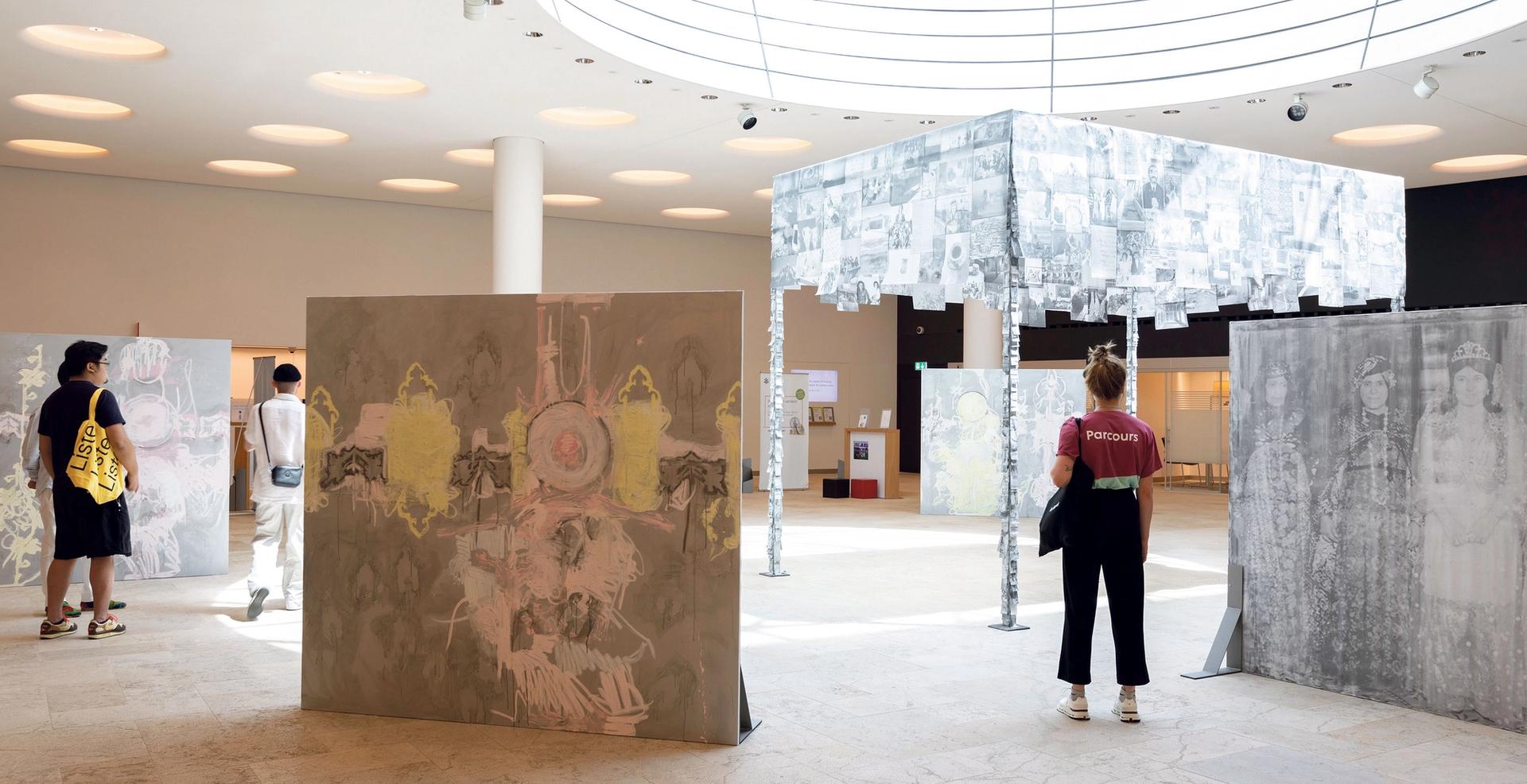
Melike Kara at UBS Geschäftsstelle Aeschenvorstadt david owens
Melike Kara
UBS Geschäftsstelle Aeschenvorstadt
“Kara’s work is centered on the constitution of archives of Kurdish knowledge. She collects all kinds of images: her own photographs, family photos, historical works, things she finds online. You can see some of these photos on these large canvases – on the back are abstract paintings by the artist. These are inspired by Kurdish tapestry design, but they are also contemporary explorations. Kara, whose work also pertains to architecture, has created a canopy-like structure that sits beneath the UBS lobby oculus, providing a backlight to the database of images pasted throughout the construction.
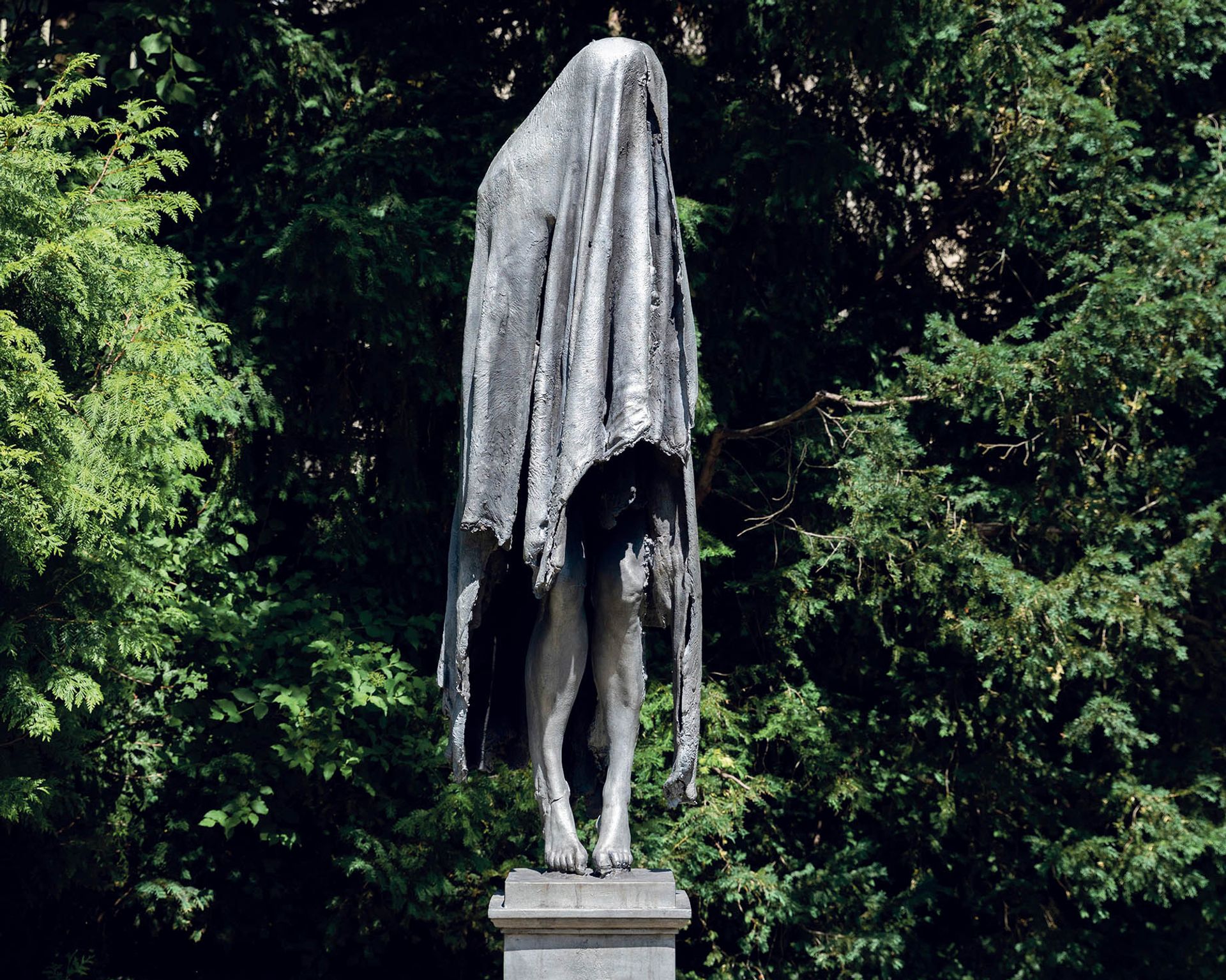
Berlinde De Bruyckere at Haus zum Raben, Picassoplatz david owens
Berlinde De Bruyckere
Haus zum Raben, Picassoplatz
“The sculpture of an Archangel by De Bruyckere, Arcangelo III (2023), stands at the end of an alley of roses in the private gardens behind the Kuntsmuseum Basel, a space normally closed to the public. A coat of stone protects the figure from the Basel sun. The artist designed this work during the Covid-19 lockdown, feeling that people were downcast and hurt. The fallen celestial figure symbolizes a certain despair.

Hank Willis Thomas at the Kunstmuseum-Kreisel david owens
Hank WillisThomas
Kunstmuseum-Kreisel
“Thomas deals a lot with the symbolism of the raised arm – of defense, resistance, hope or success. His work often analyzes the media in the United States and how these images are misused and abused, particularly around the African-American community which faces, among other challenges, increased surveillance and police scrutiny.Here, Thomas plays with the ambiguity of this gesture and what it can mean to different people. idea is only reinforced by the artist’s use of polished aluminum – a first for him – and the mirror-like quality it gives to the work.
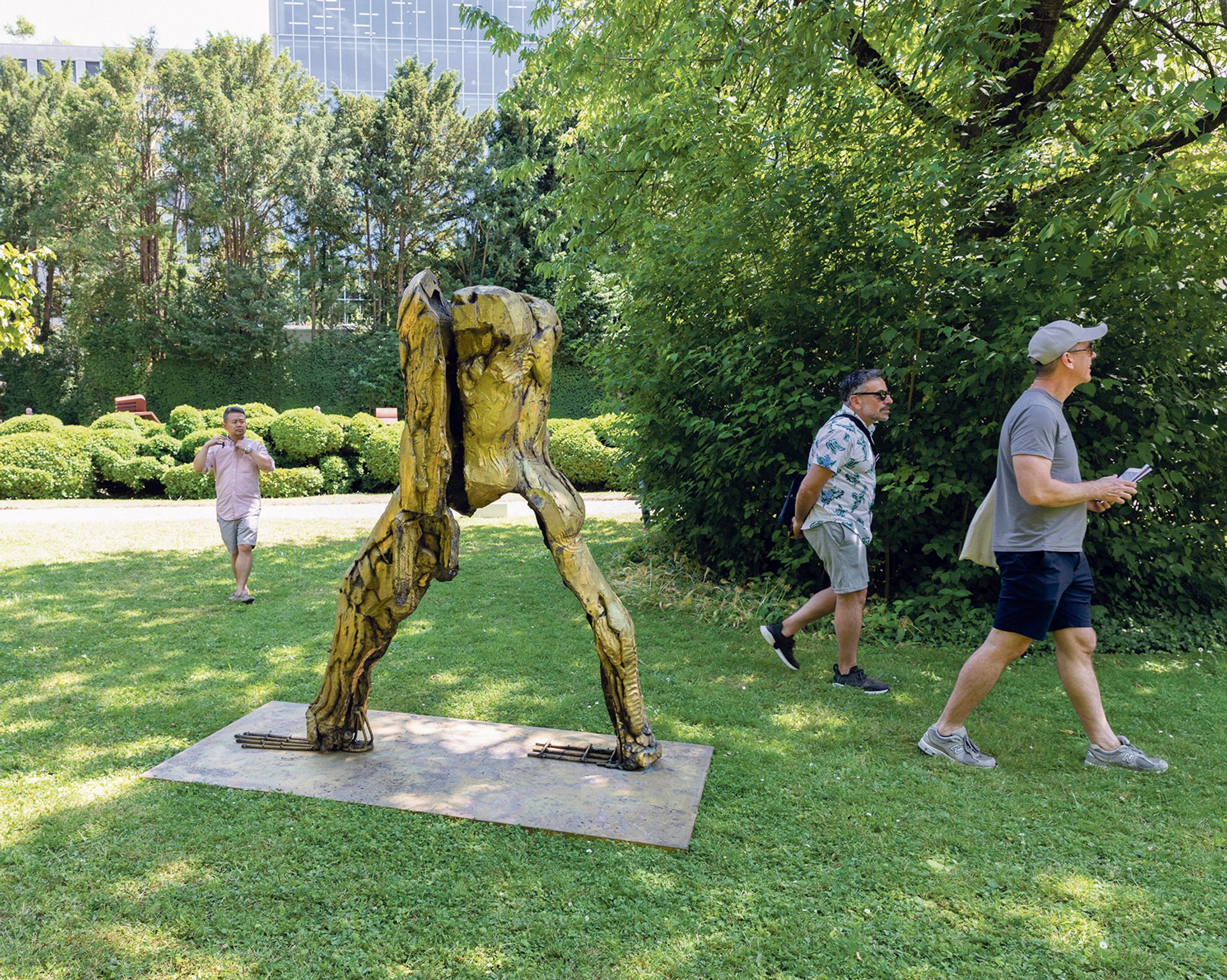
Thomas Houseago at Haus zum Raben, Picassoplatz David Owens
Thomas Houseago
Haus zum Raben, Picassoplatz
“Houseago’s avant-garde work joins that of De Bruyckere in being one of three works occupying the garden. It’s one of those rare and opportune moments when I was able to give space to several artists. This allowed me to get out of the “mini-solo-show” model and simulate a kind of sculpture park. The headless figure is partially dissected, opening it to the gardens.
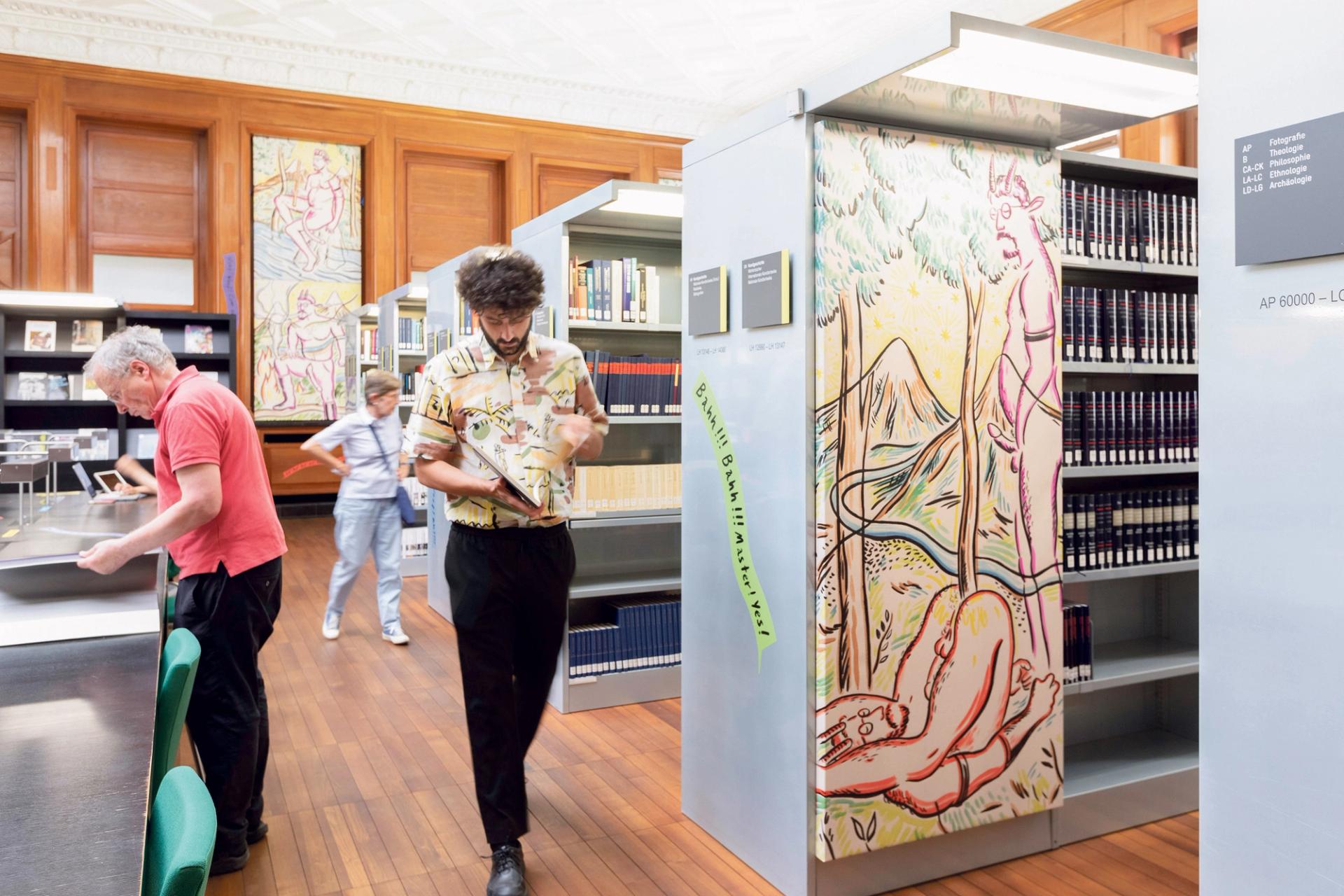
Luís Lázaro Matos in the library of the Kunstmuseum Basel david owens
Luis Lazaro Matos
Library, Kunstmuseum Basel
“Matos was interested in the library as a place of research and fantasies. The gay cruise, for example, sometimes happens in libraries. This is brought to life by these in situ paintings of sexualized and fantasized characters: the academician with glasses, the goat as a symbol of sex – as well as the wall texts, these semi-fictional writings based on naughty SMS exchanges. There is also the humor of the work: paper-eating goats in a space strewn with books. We still have to be quiet in the library, but visually the work is very noisy.
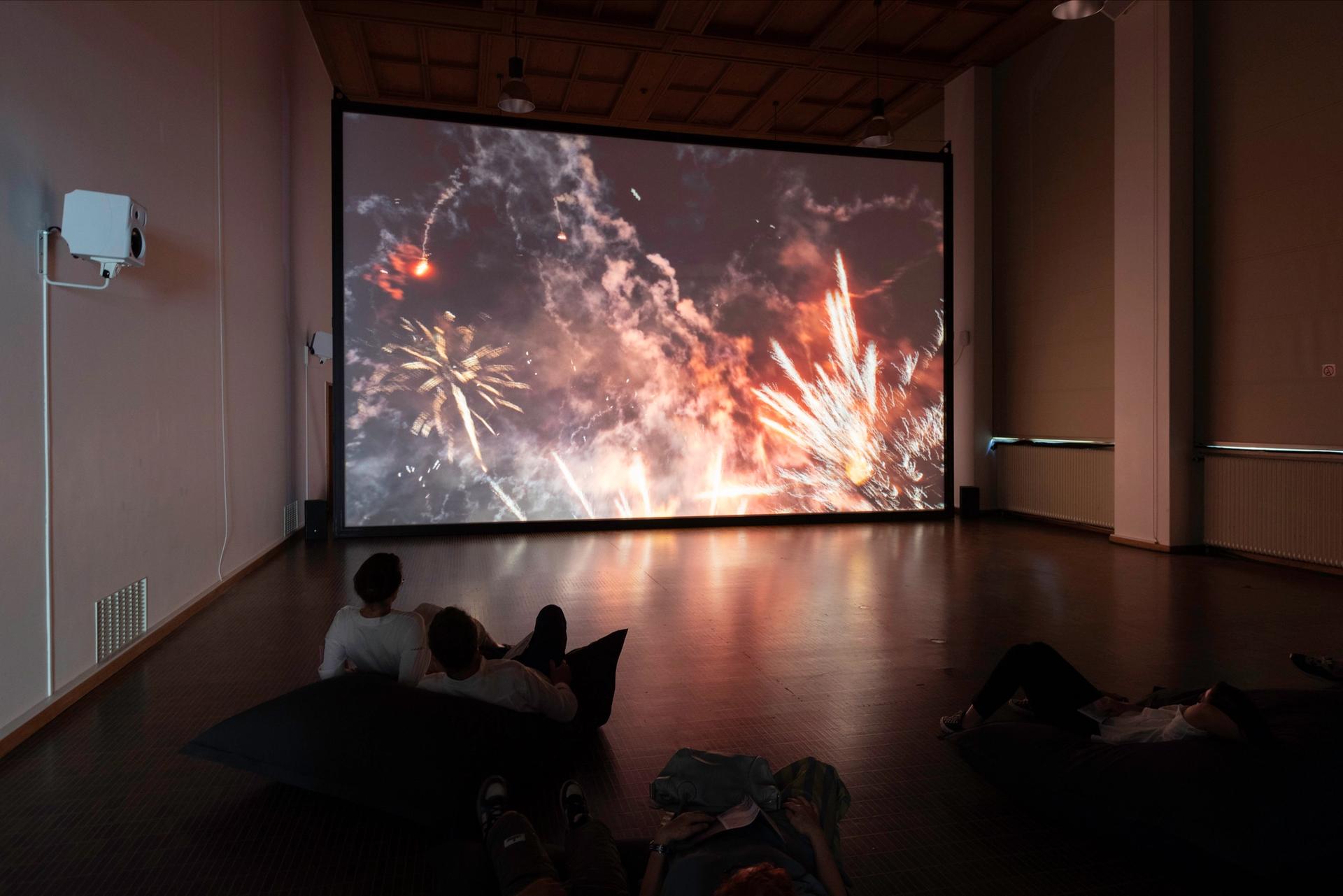
Julian Charrière in the conference room of the Kunstmuseum Basel David Owens
Julien Charrière
Conference room, Kunstmuseum Basel
“This is only the second time this film has been screened, having made its debut in a solo exhibition at the Langen Foundation in Germany. Its inclusion in Parcours therefore gives the installation its first major international audience. This What we’re looking at is footage from a drone flying over abandoned and disused mining areas in Germany’s Rhineland-Westphalia region, so we see the slightly slowed-down footage of fireworks at night, recorded in reverse. he background is pitch black at times, but when the fireworks explode, it illuminates the ruins of the area, making visible the wreckage we’re leaving behind and the damage we’re causing to the land.
